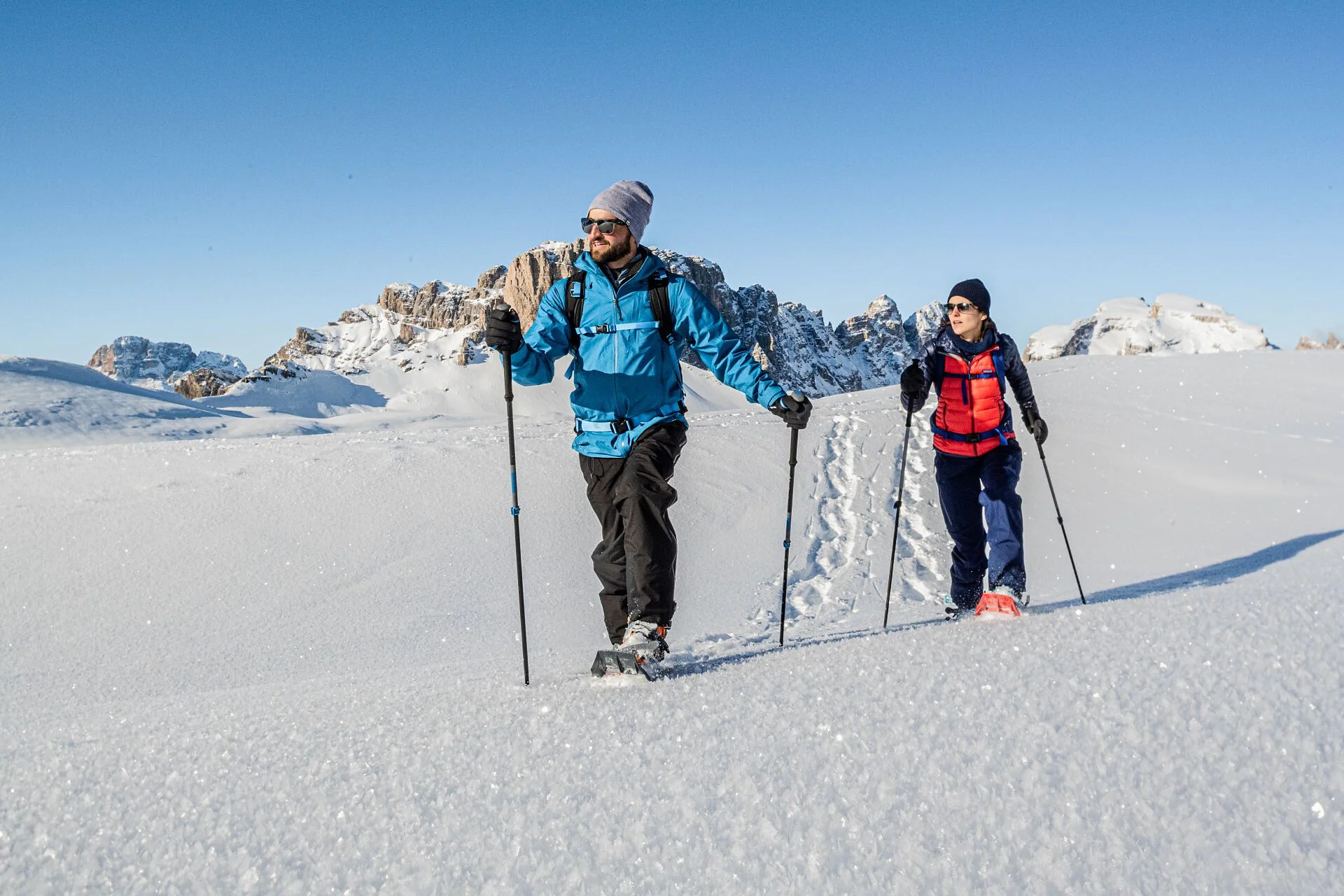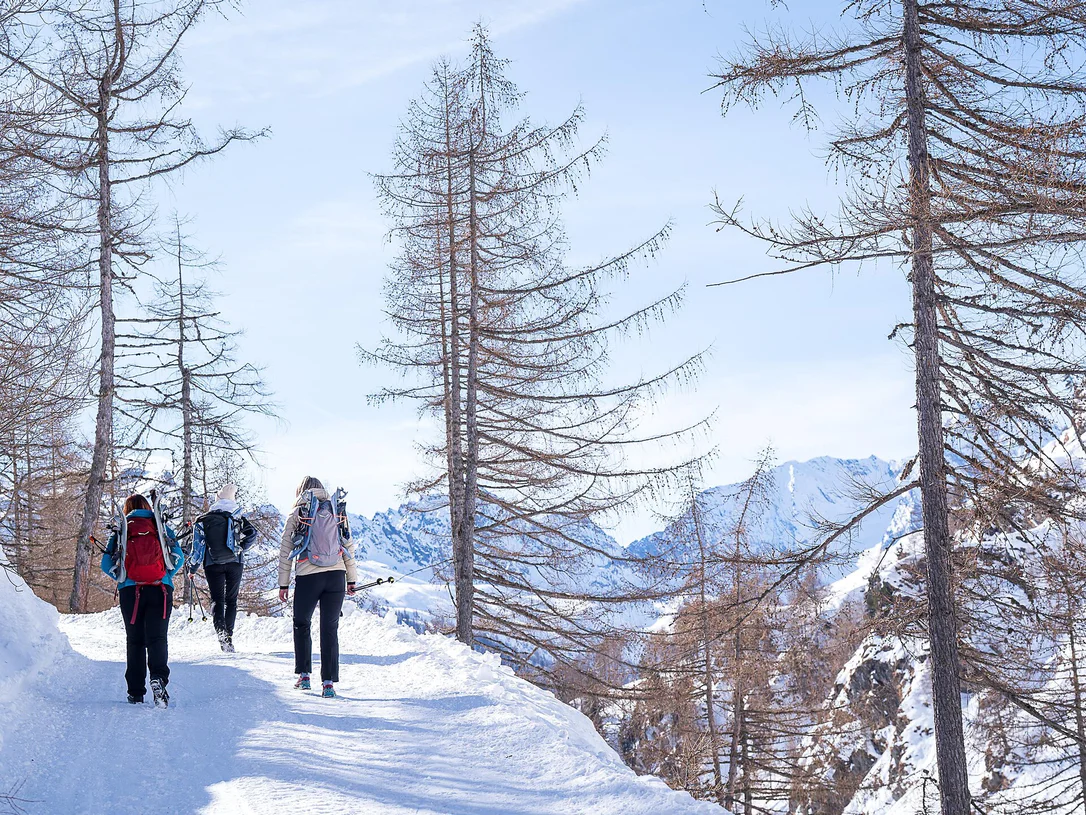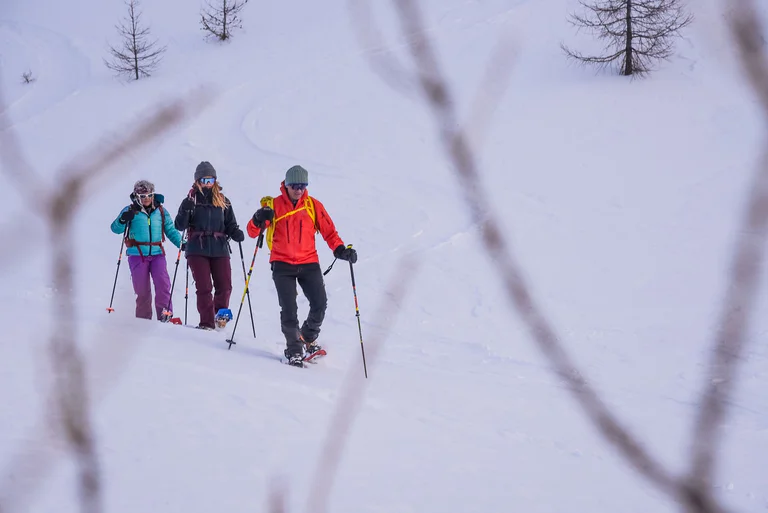This relatively easy snowshoe hike, with little variation in altitude, goes through the Armentarola meadows in San Cassiano and is ideal for anyone looking for something a bit different for half a day.
Snow-covered meadows and fantastic views await you. You can gaze all around from the Setsas to the Col di Lana, from the Sass de Pütia to the Sassongher, from the Lavarella to the Conturines and Lagazuoi. And when, in late afternoon, the sun tinges the peaks of the Dolomites with pink or red, the natural spectacle is simply perfect.






























































